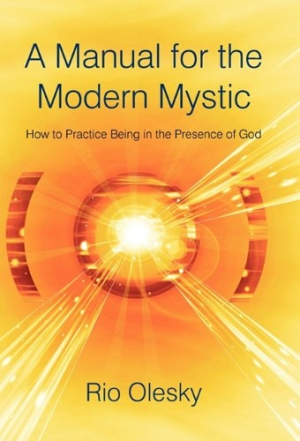A Manual for the Modern Mystic
How to Practice Being in the Presence of God
“A mystic,” writes Rio Olesky, “is someone who believes in existence beyond human comprehension; someone who values inner spiritual experience rather than relying on external authorities or scripture. A mystic is someone who has the drive and courage to look both within and outside himself or herself to discover the true nature of life.” Warning that the path to this discovery is neither easy nor quick, Olesky offers a guidebook to developing the level of consciousness and self-knowledge needed to move beyond the limitations of the rational mind and outside the boundaries of the material world to the goal of the true mystic—complete identification with Divine Spirit, and access to the limitless information, wisdom, and healing power that this union affords.
Olesky is the author of Astrology and Consciousness and Consciousness and the Astroreader; he holds a master’s degree from San Francisco State University, has been an astrologer since 1976, and is also a teacher of astrology. In A Manual for the Modern Mystic: How to Practice Being in the Presence of God, his latest work, he uses the twelve signs of the zodiac as the foundation for a discussion of twelve universal laws and their application in each individual’s life.
Integrating astrology and philosophy with wisdom from the world’s major religious and spiritual traditions, Olesky offers seekers of all faiths, or none, a way of making sense of the world and their place in it. The author’s explanations of how each sign either works with the energies of a particular law or gets caught in the traps that are inherent in each of them are enlivened with stories, spiritual practices, and descriptions of the powerful and liberating spiritual opportunities that he suggests are certain to appear as readers learn to work with the twelve universal laws.
The book’s front and back covers are attractive, and the layout and design make for pleasurable reading. In addition, the bibliography is ample enough to provide resources for further research. Although Olesky states in his introduction that he has a clear plan for organizing the extensive information he presents, that plan is less clear in the actual reading. Some careful editing would help to better reveal the essence of the valuable information he has to offer. Excessive verbiage and multiple examples for the same idea slow the reader’s progress, and sentence fragments make for a bumpy reading experience. The book also has many typographical and grammatical errors as well as sentences in which essential words are missing. For example, “If we try to make who are and what we have too stable”, “With intuition, we connect us to Spirit”, and “Something as seemingly simply as.”
In spite of such errors, Olesky has made a valuable contribution to the literature with his demonstration of the way that astrology combines the rational and the intuitive in a complex, multifaceted system. Rather than seeing humankind as separate from or above the natural world, he invites contemplation of the ways in which humanity is intimately connected to all that is—to the planets, to those who make up one’s ancestral heritage, and to other human beings who are also participating in the great cosmic dance.
Reviewed by
Kristine Morris
Disclosure: This article is not an endorsement, but a review. The publisher of this book provided free copies of the book and paid a small fee to have their book reviewed by a professional reviewer. Foreword Reviews and Clarion Reviews make no guarantee that the publisher will receive a positive review. Foreword Magazine, Inc. is disclosing this in accordance with the Federal Trade Commission’s 16 CFR, Part 255.

